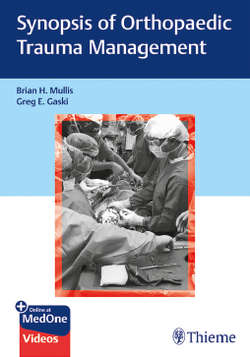Читать книгу Synopsis of Orthopaedic Trauma Management - Brian H. Mullis - Страница 33
На сайте Литреса книга снята с продажи.
IV. Traction Pin Placement
ОглавлениеA. Create a sterile field with the limb exposed.
B. Administer local sedation +/– sedation.
C. Insert the pin from the known area of neurovascular structure.
D. Distal femoral traction
1. It is the method of choice for acetabular and proximal femur fractures.
2. Indicated in the presence of a knee ligament injury for femoral shaft fractures instead of proximal tibial traction.
3. Insert the pin from medial to lateral at the adductor tubercle—slightly proximal to epicondyle.
E. Proximal tibia traction
1. It is the method of choice for femoral shaft fractures.
2. Insert the pin 2 cm posterior and 1 cm distal to the tibial tubercle from lateral to medial.
3. Incise skin and avoid the anterior compartment by mobilizing the muscle posteriorly with the pin or hemostat.
F. Calcaneus traction
1. Typically used when proximal tibia and distal femur traction pins are contraindicated.
2. Insert the pin medial to lateral 2 to 2.5 cm posterior and inferior to the medial malleolus.
G. Place sterile dressing around pin site.
H. Place protective caps over sharp pin ends.
I. Hang weight from the traction bow.
1. Fifteen percent of the body weight for distal femur traction.
2. Ten percent of the body weight for proximal tibia and calcaneus traction.
